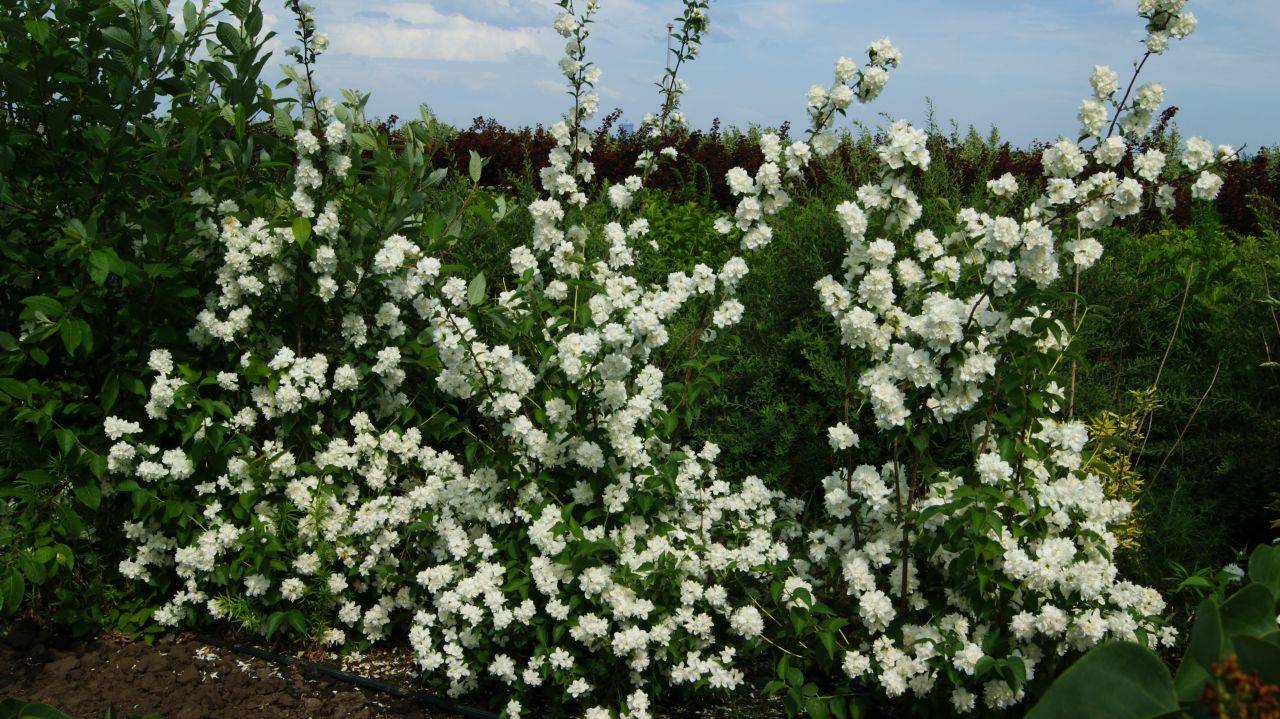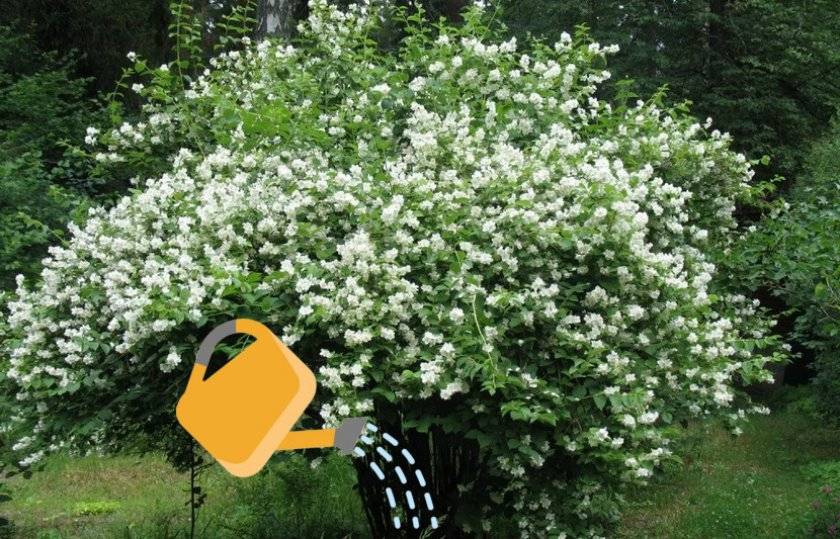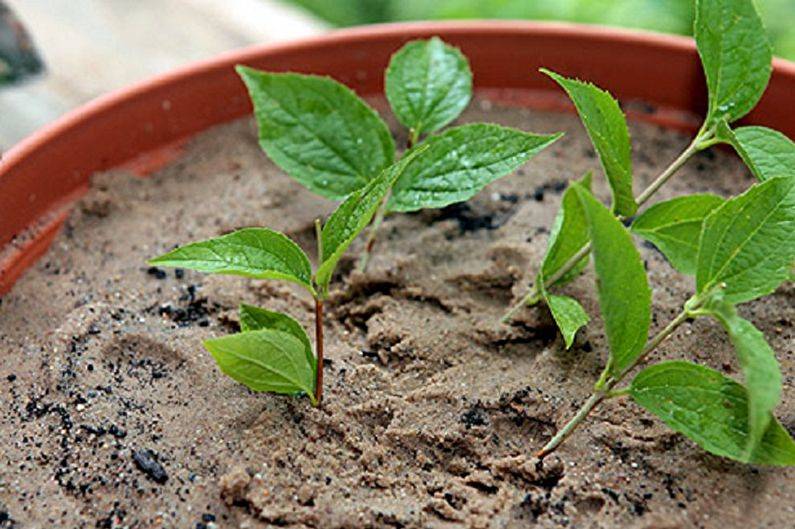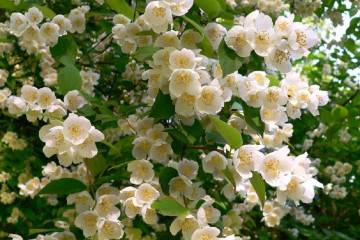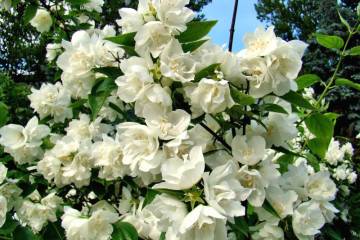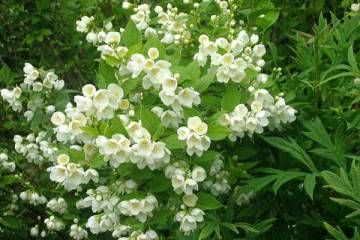Chubushnik shneesturm - description, planting and care
Content:
Chubushnik (jasmine) is one of the fastest growing ornamental shrubs. Its shoots are capable of producing a 3-meter growth in a year. It is impossible to look away from the falling branches covered with white inflorescences. The following is a description of the Schneesturm chubushnik, information on planting, caring for the crop, methods of its reproduction, and use in landscape design.
Description of the chubushnik Shneeshturm
It is a deciduous shrub with a height of 3 meters. At the base, the shoots are strong, thickened. They gradually decrease in diameter. As a result of this structure, the Schneesturm chubushnik takes the shape of a jug.
The foliage of garden jasmine is dark green, saturated. By autumn, it acquires a yellow color. The inflorescences consist of white flowers with a diameter of about 5 centimeters. The buds begin to bloom at the end of June. During flowering, a delicate aroma emanates from the chubushnik bushes.
Planting a plant
Seeds are planted in spring or autumn. If they are sown in open ground for the winter, they will naturally undergo a stratification procedure.
Planting from seeds
Chubushnik seeds require keeping in cold conditions. Before spring planting, they are placed in the vegetable section of the refrigerator for 2 months. Then the seeds are mixed with sand and evenly spread over the soil. If the planting is carried out in the fall, the territory is covered with compost, covered with spruce branches.
Seeds can be pre-planted in a container. To do this, they are first soaked in water for 2-3 hours, then placed in moist peat for 2-3 days. Then they are slightly dried, and planted in a container as follows:
- a mixture of peat, compost, leaf earth is poured into the container;
- seeds are carefully spread over the surface of the soil;
- sprayed with water from a spray bottle;
- fall asleep with a layer of sand;
- cover with foil.
The mini-greenhouse is ventilated every day. The condensation formed on the film and the walls of the container is wiped off. After pecking the sprouts, the film is removed. When the 4th leaf appears on the seedlings, a pick is carried out. Young bushes are planted in small pots.
Planting seedlings in open ground
At the end of spring, the mock-orange is planted on the site. Seedlings are pre-hardened, gradually accustoming them to fresh air. The holes are dug 2 times the root system of the seedlings. After planting, the area around the bushes is abundantly watered and mulched.
How to care for a chubushnik
Care consists in timely watering, feeding, removing weeds around the plants. For better tillering, the shoots are pruned. So that the bushes are not affected by diseases and pests, prophylactic spraying with special preparations is performed.
Watering
Shneesturm does not tolerate drought well. The delicate leaves begin to droop. Therefore, in hot, dry summers, the bush is watered at least 2 times a week. The water is used warm, settled.
1-2 buckets of liquid are poured under a young plant. An adult chubushnik needs much more water.
Top dressing
The bushes are planted in fertile land, therefore, no additional feeding is done this year. The following spring, the soil under the plants is fertilized with nitrogen. You can add organic matter, for example, mullein, diluted in water in a ratio of 1:10.
Before flowering, the mock-orange is fed with a complex mineral composition. After the inflorescences fall off, potassium-phosphorus fertilizers are applied.
Pruning
Frozen, damaged, dry branches are removed in early spring. Terry Chubushnik Shneeshturm grows quickly, therefore it needs to thin out the crown. Old shoots are cut at the root every 3-4 years.
To form a symmetrical bush, the weak branches are cut in half, the strong ones are slightly shortened. The procedure is carried out immediately after the flowering of the plant.
Reproduction methods
A gardener can breed jasmine on the site in several ways: by seeds, cuttings, layering, dividing the bush. Applying the first method, it should be borne in mind that not all of the Shneesturm qualities stated in the description of the chubushnik can be transmitted.
The bushes are propagated by cuttings and layering in the spring. Shoots are used both green and lignified. Plants are divided and transplanted in the spring, before bud break, or in the fall.
Diseases and pests
Due to improper care or unfavorable climatic conditions, Shnistrum, as it is sometimes called, can be affected by diseases and pests. The appearance of gray rot and septoria spotting is caused by increased air humidity, stagnation of water at the roots. For the prevention and treatment of diseases, antifungal drugs are used.
Of the pests, the spider mite, weevil, and aphids can take a fancy to. They suck out cell sap, weakening the plants. Get rid of pests by insecticide treatment.
Preparing for winter
Garden jasmine tolerates cold winters well. Even if the delicate tops of the shoots are damaged, they can be cut in the spring. Chubushnik will quickly grow young branches.
You need to take care of the root system of plants, especially in an area with frosty winters. In the middle of autumn, water recharge irrigation is carried out. Then the trunk circle is covered with peat, dry grass, spruce branches.
Use in landscape design
The crown mock-orange philadelphus coronarius Schneesturm looks spectacular in a single planting. The bush begins to bloom early, so its hanging shoots become the main decoration of the garden in early summer.
Ornamental deciduous plants are planted against the background of the bush. Chubushnik can become a beautiful foreground for tall conifers. Garden jasmine is also used to cover unsightly outbuildings.
Shneeshturm is a variety of wreath chubushnik with double flowers of white color. It becomes the main decoration of the local area in late spring and early summer. Its winter hardiness is at a high level. Caring for the bushes is easy. After studying the above information, the gardener can easily grow garden jasmine on his site.
